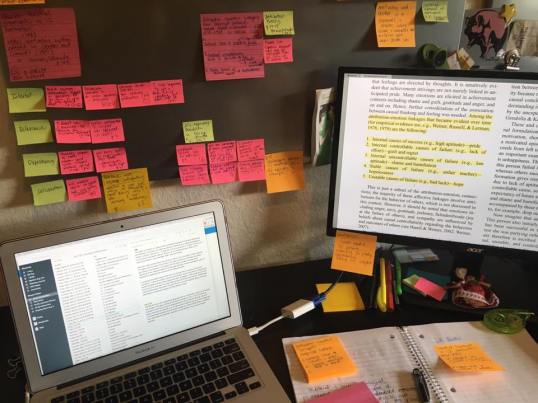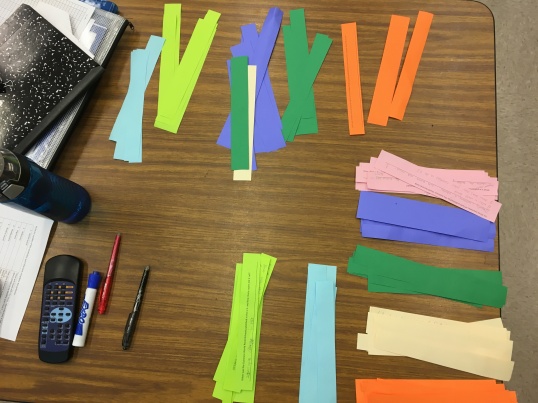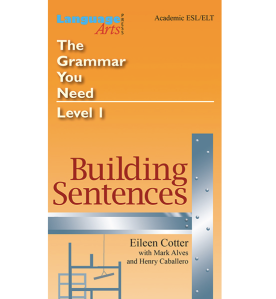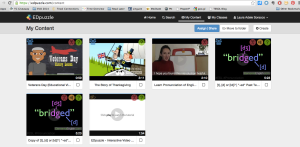English as an International Language: Global Perspectives (Guest Post)
Earlier this year, I posted a collection of highlights from #TESOL16 written by fourteen teachers (including yours truly). There is something special about sharing this space with other teachers in different parts of the world. I now have the honor to do that again through a post written by a special guest blogger, a current Arkansas Tech University graduate student, Charla New. In her post, she discusses different perspectives on the use of English around the world.
Charla’s post led me to wonder: Do most teachers of ESOL consciously think about the English variety they teach? What lies behind the choice to teach (or learn) any particular variety?
Understanding why we make these choices and learning about our options should help us gain a more global perspective. Thank you, Charla, for bringing up this important topic!
As the language for global business, scientific, maritime and aeronautical communications, English is the worldwide lingua franca. One in six people speak English, 80% of the world’s computer-stored information is in English, four of the world’s top five largest companies speak English as their primary language, 54 countries claim English as an official language, and 80% of business communications worldwide are in English.
However, ELL classrooms still emphasize British, American, and ‘standard’ Englishes. I propose instructing English as an International Language (EIL) instead. EIL is the concept of English as a global means of communication in numerous dialects, not only the sacred Queen’s English or the mythical ‘standard English’.
Worldwide non-native speakers of English outnumber native speakers three to one. With such an enormous lead on natives, I believe non-standard English variants should have more prominence in the classroom, and not only for statistical reasons. Students needn’t know English only to survive in English speaking countries, but they need it to survive in the world.

“A Half Globe” by Stephan Khun
Connecting classes globally is possible in ways now that weren’t in the past. With technology, bountiful websites and social media, our options are limitless. To implement EIL we must start with ourselves and analyze our teaching philosophies and goals. What do we expect from ELLs? Ought they conjugate past tense verbs in newscaster accents, or should they place communication and problem solving first? What should we stress to students as most important in language learning?
As instructors, we mustn’t fret the small things: news caster pronunciation, phonetic perfection, using the third person singular ‘s’ with 100% accuracy. Most native speakers don’t know the difference between past participles and antecedents, so should we drill and over-empathize such nuances to our ELLs? Is that really authentic?
Exposing ELLs to EIL benefits the students both academically and civically. Bringing classrooms together over international borders exposes students to new cultures, lifestyles and world viewpoints, building empathy and broadened global perspectives.
EIL exposure causes a learner-ego boost, with the realization that native-like English is not our goal. Students should observe that people around the world speak Englishes that don’t necessarily sound like ‘standard’ English. This simple realization may encourage shy, unconfident ELLs to speak out rather than fall behind in oral skill development due to a misplaced sense of discontent.
The last, most pressing reason for EIL implementation comes from a result of the world shrinking, technology bringing the population closer together, and our world’s major threats growing bigger and more worrisome: climate change, mass poverty, terrorism, and nuclear weapons. The need for teachers to foster an effective, broad minded, empathetic generation is more important than ever. Communication skills are crucial for a brighter future.
I encourage instructors to explore two websites: elllo.org and ePals.com. Both serve as excellent for pulling examples of EIL and connecting classrooms globally, culturally and linguistically.
For a full webinar of ePals : (https://www.youtube.com/watch?v=1fuAvJSZd7o&index=2&list=PLNzpshBBvP_BzuD28IHWQmNYJ41jWvG0R)
List of One Minute Videos of EIL speakers: (http://www.elllo.org/video/V1201.htm)
Author Bio
Charla New is currently a graduate student at the Arkansas Tech University English Language Institute. There she has taught level 2 Speaking, Listening and Reading. She obtained a bachelor’s degree in Spanish and ESL education and currently peruses an MA in TESOL to graduate December. Having studied abroad in Central America multiple times, she holds a passion for Spanish, language learning, and cultural exchange.






